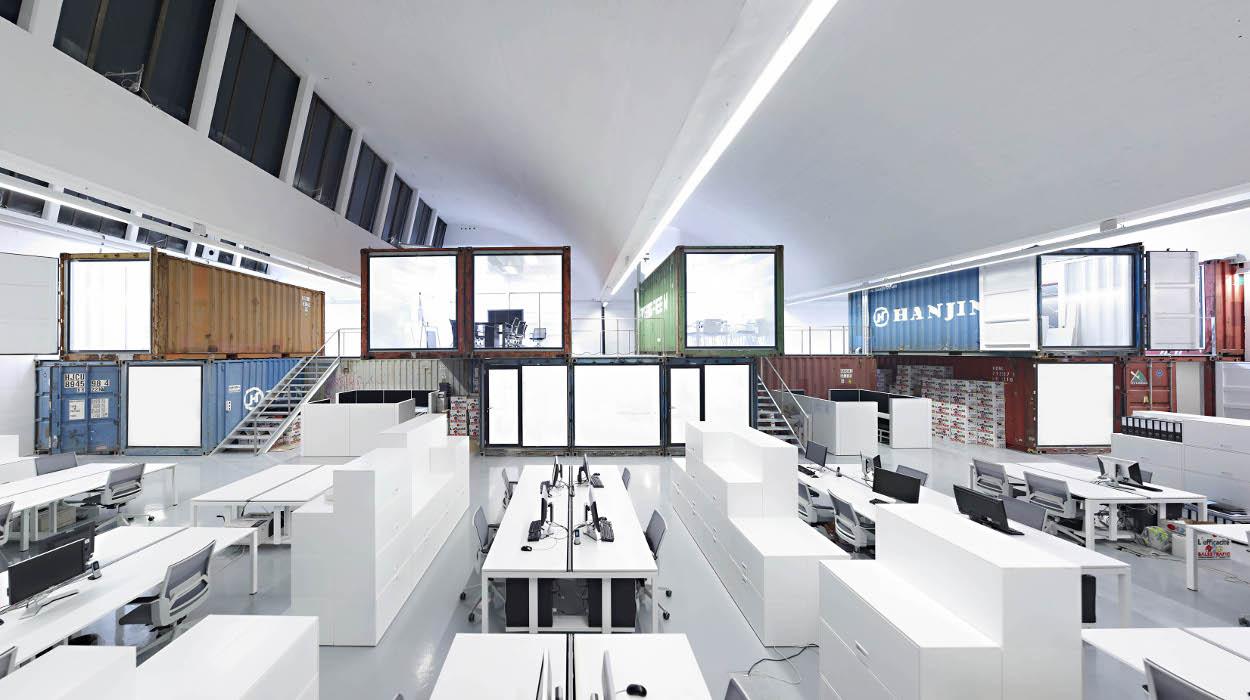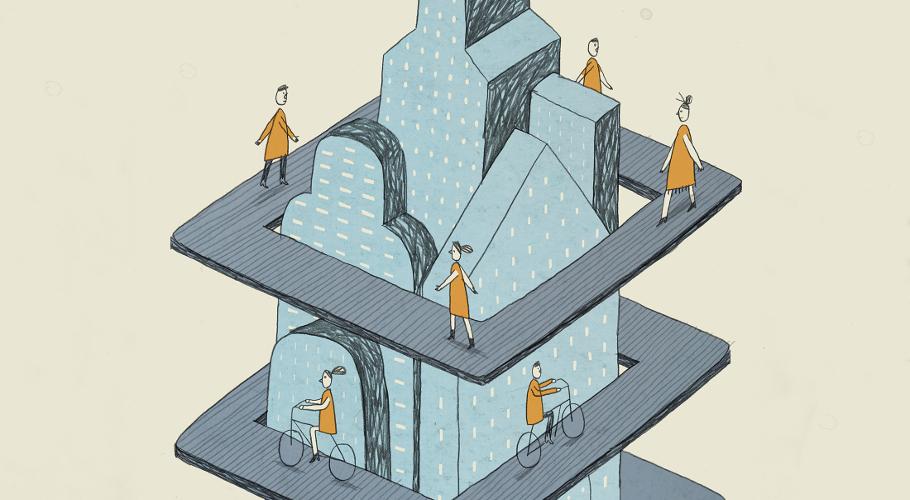INSPIRATION

Architecture: People friendly buildings
A growing movement in the architectural community believes that sustainable design will reach its potential only when we begin to seriously consider how a building affects the people who interact with it. In the last century, much of the built environment was designed in such a way that it was disconnected from—if not antagonistic to—the natural world and indeed, human beings. While sustainability (and LEED principles) have become basic tenets of good design, more can be done to design buildings and work environments with positive impacts on health and well-being: promote movement, minimize disruption and incorporate or evoke nature.
INCORPORATE NATURE
Creating a direct connection to nature often takes the form of living “green” walls, indoor gardens or water features that bring elements of the natural world into the built environment. Equally important, buildings can be designed to elicit a restorative response by providing outdoor views and allowing natural light to flow through the interior of the building.
Strategies include:
• Install sufficient glazing along external walls to provide prospect views and situate enclosed spaces in the building core.
• Use glass to define enclosed spaces, especially partitions facing the external wall.
• Keep workstation partitions low (52" at the most) and orientate workstation spines perpendicular to the exterior window wall.
EVOKE NATURE
Materials, colors, shapes and patterns that reference nature are analogues of “real” nature, prompting a biophilic response in human beings. Design offers a myriad of ways to evoke nature: textiles that employ colors, textures and patterns drawn from nature; furniture with organic shapes and lighting that mimics the shifting patterns of sunlight and shadow. Interiors might even be designed to give the impression of being out of doors by combining wood and stone elements with abundant vegetation and water features.
REPRESENT NATURAL SPACES
Because human beings respond both psychologically and physiologically to the qualities and configurations of space, architecture offers a subtle, but powerful, way to affect our mental and emotional state. The most engaging spaces replicate the character of the natural landscape and the design of many of our earliest dwellings—offering an experience of both prospect and refuge; exhilarating views and intimate nooks in which to withdraw from the flow of activity. Transitional spaces that create visual and physical connections are also important and include: thresholds, portals, bridges and fenestration. Lastly, design can approximate the sensory stimulation of the natural landscape by varying color, pattern, light, sound and elements of scale to convey both complexity and a reassuring sense of order.
PROMOTE MOVEMENT
In essence, an “active workplace” provides a variety of spaces designed for specific types of work, encouraging workers to move from space to space to complete different tasks throughout the workday. Ideally, the office plan will provide formal and casual meeting spaces with varied degrees of openness or enclosure. Furniture can include lounge chairs and sofas gathered around low tables to allow for relaxed postures, as well as a meeting table and work chairs. Writable or pin-able walls invite workers to walk to a shared space to confer with colleagues. Attractive stairways connect people as well as floor levels.
While applying strategies to get workers moving across the floorplate, design can also act as a catalyst to movement by providing efficient, easy-to-use height adjustable desks and tables at the individual workstation, in meeting rooms and in shared workspaces. Thus, workers can sit or stand at will. This ability to change one’s posture has significant physiological benefits, but also provides a sense of control and empowerment conducive to worker engagement and satisfaction.
Activity or context-based floorplans encourage physical and psychological health by allowing people to choose to work where they like. According to personal preference, workers can elect to tackle the task at hand at a traditional or standing desk, in a lounge area or café booth or inside a closed-door office. Adjustable furniture, along with lightweight furniture that can be dismantled, folded or rolled offers a complementary strategy for encouraging movement and improving worker health and performance.
MINIMIZE DISRUPTION
Disruption of attention and focus while working causes stress, errors and fatigue. In today’s open work environments, it is essential to address noise levels with sound absorbing elements: wall-coverings, carpet, acoustic ceilings or special ceiling treatments, window treatments and perhaps, “white noise.” Further, the office should offer non-assigned spaces for heads-down work that offer protection from the chatter and clatter of the open workspace. These places of refuge can take the form of small team rooms, one-on-one booths and quiet rooms where conversation and mobile phones are verboten.
While a certain amount of visual and auditory input can be stimulating, the presence of too much fluctuating activity and noise is exhausting—especially for thoughtful introverts. In a healthy office, there is recognition that concentration and quiet reflection are part of the collaborative process, modalities that require a degree of privacy and freedom from disruption. Most of us have new ideas on our own and then work with others to develop thoughts more fully. Always, it’s important to consider the wide range of people with different personalities and different needs.
As the world continues to urbanize and more people work longer hours indoors, often at a computer, it becomes ever more important to employ design to reduce stress, enhance creativity and improve mental and physical health. We need design that connects us with nature that supports our biological need to move and our emotional need to occasionally withdraw to think or rest as much as we need the means to draw people together and connect their working thoughts and ideas.
Source: www.teknion.com



